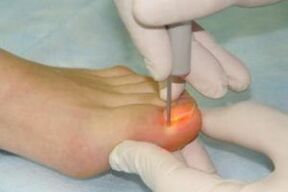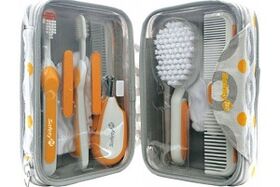It is quite common among people to think that fungal nail infections are not dangerous to human health.Onychomycozis (fungal infection of the nails) goes unnoticed for a significant part of many people's lives, often due to the lack of acute symptoms.However, this does not make treatment any less important for such patients.Also, everyone should imagine which nail plates affected by fungi appear to independently diagnose the pathology.
Infection with fungal microorganisms

Infection with Mungi can occur in situations that are completely familiar to people.In most cases, everyone does not even realize how they are exposed to the risk of infection.The causes of nail infections primarily include:
- Someone else's shoes, especially on feet without socks or tights.
- Visiting saunas, baths and swimming pools without individual slippers (slates).
- Looking for the services of a pedicurist in salons with questionable work quality.
- Use someone else's files and scissors to process the nail plates.
- Using other people's washcloths and towels.
In addition to the direct causes of onychomycosis, there are factors that contribute to easier infection:
- Constantly wear worn socks, stockings, tights.
- Shoes that close sweaty feet in the hot season (and this is favorable for the spread of fungal microorganisms).
- Neglecting to constantly wash your feet with soap, especially after wearing open shoes.
- Buy shoes made of artificial materials.
- Hangnails around the nails, cracks and corns at the bottom.
What fungus looks like nails
Nail changes develop slowly, without antifungal therapy can lead to nail plate separation, which is known to progress steadily and be irreversible.All clinical manifestations of Onychomycozis at different stages of development have varying degrees of severity.Changes in the nail are also individual, but in general, a number of common signs can be identified:
- It changes the color of the nails to brown, yellow, white, greenish and their shades and combinations.
- The appearance of brittle nails, their separation.
- The edge of the nail cavity is more broken.
- The appearance of canjnils, cracks on the skin near the nail, in the spaces between the fingers.
- An increase or decrease in the thickness of the nail (but in some cases the thickness remains unchanged).
Treatment of nail fungus

When the first suspicious signs of the disease are identified, it is recommended to start all therapeutic measures aimed at eliminating onychomycosis on the foot.
What to treat, what drugs and how to use them determine the stage of development of the disease and the stage of damage to the nails.
In general, there are two options for taking antifungal drugs - local (topical) and general (systemic).Topical products are gels, ointments, creams, solutions and sprays for application to the skin and nails.Systemic therapy is an intravenous infusion of drugs and is taken orally (orally, that is ") in the form of tablets or capsules" orally ").
These options can be used not only in isolation, but in combination with each other.In addition, mechanical removal of infected tissue, but only in cases of advanced fungal damage.
Topical antifungal drugs
- Solutions for external use.They should be applied to the affected areas with a brush twice a day.Before application, it is recommended to wash the areas with soapy water and dry them.After applying the solution, cover the area with an aseptic bandage."
- Antifungal ointments and creams are applied in a thin layer to the affected area once or twice a day.
Mechanical removal

Most patients believe that when it comes to this type of treatment, the nail will definitely be removed completely.Fortunately, they resort to it only in the advanced stages of the disease (fungi have affected most of the tissues).In other cases, they can use pedicure tools to remove the tissue part, that is, those affected by microorganisms.
The operation to remove the nail plate under local anesthesia is long.In it, the whole nail is removed at once, and first they separate it from its bed with scissors, then "pull it out" with nippers.However, such an operation damages the nail matrix, which leads to proper growth of new tissue and often soft tissue.
Now there is an option to get rid of the fungus using laser removal of the infected nail plate.The laser does not touch healthy tissue and destroys the fungal cells located in the deep layers of the nail, avoiding the deformation of the plaque.
In addition, there is a hardware removal method in which the nail is removed from the layer using a device using cutters of different sizes.The procedure is carried out once a week or every two weeks.Repeat this until the affected layers of the nail are completely removed.
Prevention of onychomycosis

It is not so difficult for any patient to prevent infection with pathogenic fungi in humans.You just need to be more careful about your lifestyle and remember such a disease as onychomycosis.List of basic measures to prevent athlete's foot:
- Do not wear, do not wear, someone else's shoes.
- Use only your own socks and tights, remembering to wash them regularly.
- You have your own pedicure kit.
- Use the services of a pedicurist only in proven and "high-quality" service places.
- Remember to bring and wear flip-flops or slippers on public beaches.
Everyone should remember that onychomycosis is far from a harmless disease, it can even deprive the nail plate or be complicated by a serious condition called "fungal sepsis" (blood poisoning).
Today, all effective treatment regimens for toenail fungus have been developed;You just need to consult a dermatologist in time and determine the presence of pathogenic microorganisms.















